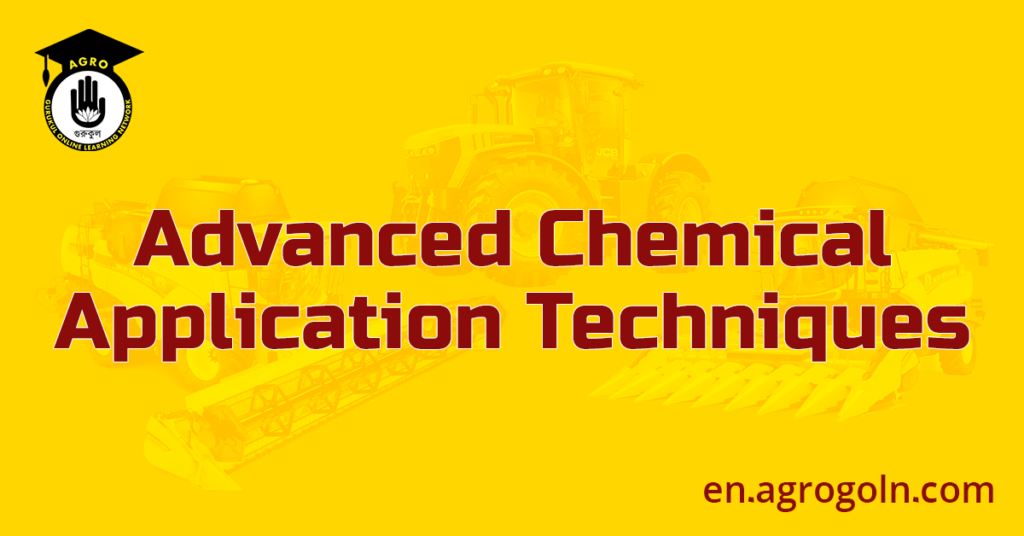Crop protection is a critical aspect of modern agriculture, ensuring the health and productivity of crops while minimizing losses due to pests, diseases, and weeds. Chemical application techniques play a pivotal role in this process, enabling farmers to apply pesticides and herbicides efficiently and effectively. Over the years, advancements in crop protection machinery have led to more precise, sustainable, and environmentally friendly application methods, revolutionizing modern agriculture.
Advanced Chemical Application Techniques
The Evolution of Chemical Application Techniques
The use of chemicals for crop protection dates back centuries, but it was not until the 20th century that advanced application techniques began to emerge. Traditional methods like hand spraying and dusting were labor-intensive and lacked precision, often resulting in uneven distribution and excessive chemical use.
The advent of motorized sprayers in the mid-20th century marked a significant advancement. These early sprayers utilized high-pressure pumps and nozzles to deliver a fine spray of pesticides. However, they still faced challenges with drift, off-target application, and overuse.
Precision Agriculture and Crop Protection
The rise of precision agriculture in the late 20th century brought about a paradigm shift in crop protection. Precision agriculture leverages technology, data, and automation to optimize farming practices, including chemical application.
Global Positioning System (GPS) technology, combined with Geographic Information Systems (GIS), allowed farmers to precisely map their fields, identify problem areas, and apply chemicals only where needed. Variable rate technology (VRT) further enhanced efficiency by adjusting application rates based on real-time data, ensuring the right amount of chemical is applied in each area.
Advanced Nozzle and Sprayer Technologies
In recent decades, significant advancements have been made in nozzle and sprayer technologies, leading to more precise and effective chemical application.
- Air Induction Nozzles: Air induction nozzles, also known as low-drift nozzles, create larger droplets that are less susceptible to drift. This minimizes the risk of chemicals being carried off-target by wind, enhancing safety and reducing environmental impact.
- Drift Reduction Technology: Modern sprayers are equipped with drift reduction technology, which can reduce drift by up to 90%. This technology helps ensure that the chemical reaches the target area, increasing efficiency and reducing waste.
- Pulse Width Modulation (PWM): PWM technology allows for on-the-go adjustments to the application rate and droplet size, based on real-time data. This precise control optimizes chemical use, saves costs, and minimizes environmental impact.
- Automatic Boom Height Control: Sprayers equipped with automatic boom height control maintain a consistent spray height above the crop canopy, ensuring uniform coverage and reducing the risk of damage to plants.
Electrostatic Sprayers
Electrostatic sprayers have emerged as a cutting-edge technology in chemical application. These sprayers positively charge the spray droplets, which are then attracted to negatively charged plant surfaces. The electrostatic attraction results in improved coverage and adherence of the chemical to the target, reducing drift and improving overall effectiveness. Electrostatic sprayers are particularly beneficial when dealing with dense canopies or hard-to-reach areas.
Drones in Chemical Application
Unmanned Aerial Vehicles (UAVs), commonly known as drones, are transforming agricultural practices, including chemical application. Drones equipped with spray tanks and advanced sensors can fly over fields and apply chemicals with remarkable precision. Their ability to access difficult terrain and deliver targeted application makes them a valuable tool in crop protection.
Drones equipped with multispectral or hyperspectral cameras can also provide real-time data on crop health and pest infestations. This information aids farmers in making informed decisions on when and where to apply chemicals, further enhancing the efficiency and sustainability of crop protection practices.
Biological and Smart Pesticides
As the demand for sustainable and environmentally friendly agriculture grows, the focus is shifting towards biological and smart pesticides. Biological pesticides use naturally occurring microorganisms, such as bacteria, fungi, or viruses, to control pests. They are highly specific, targeting only the pest species, and pose minimal risks to non-target organisms and the environment.
Smart pesticides, on the other hand, are designed to be more selective and have controlled-release mechanisms. They are formulated to act only when specific conditions are met, such as the presence of the target pest or a particular environmental factor. This reduces the amount of chemical needed and prevents unnecessary exposure.
Challenges and Considerations
Despite the significant advancements in chemical application techniques, there are still challenges to be addressed. These include:
- Resistance Management: Prolonged use of chemical pesticides can lead to pest resistance, making control more challenging. Integrated Pest Management (IPM) strategies that combine various pest control methods, including chemical and non-chemical approaches, are crucial to mitigating resistance.
- Environmental Concerns: While advanced techniques reduce chemical drift and overuse, there is always a risk of environmental contamination. Sustainable and responsible chemical management practices are essential to minimize these impacts.
- Cost and Adoption: Some of the advanced technologies can be costly to adopt, especially for small-scale farmers. Education, training, and financial incentives are needed to encourage widespread adoption of these techniques.
- Regulatory Compliance: Chemical application is subject to strict regulations to protect human health, the environment, and non-target organisms. Adherence to regulatory requirements is vital for safe and responsible chemical use.
Conclusion
Advanced chemical application techniques have revolutionized crop protection, making it more precise, efficient, and sustainable. From precision agriculture and drones to electrostatic sprayers and biological pesticides, these technologies empower farmers to protect their crops effectively while minimizing environmental impact.
To maximize the benefits of these advancements, it is essential for farmers, agricultural experts, and policymakers to collaborate on integrated and responsible pest management strategies. By harnessing the full potential of advanced chemical application techniques, agriculture can continue to thrive while safeguarding the environment and securing global food production for future generations.

